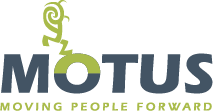If you have ever been on a fishing expedition, you know the most successful fishermen use the best, most appropriate bait available. They also have the most lines (and hooks) in the water. A job search is much like a fishing expedition. Your resume represents the bait, and each company that you send your resume to represents a line with a hook that allows you to snag a job. Think of your ideal job as that big fish, the one you can’t wait to brag about to your friends, the one that didn’t get away, and your claim to fame! Just as it is important for a fisherman to use the right bait to attract that big fish, it is imperative job seekers use the right resume to attract that big job opportunity.
During my 12+ years as a corporate recruiter, I’ve seen my fair share of resumes—some good and some not so good. Here is my list of the “7 Deadly Sins of Resume Writing”:
ONE: Poorly formatted resumes. Occasionally, I receive resumes the old-fashioned way, through the U.S. Postal Service (aka “snail mail”). Although this is not the preferred method to receive resumes these days, it still works. If you choose to mail your resume, make sure it is easy to read and formatted well. Not too long ago, I received a handwritten resume for a management position. There is no way I would ever forward a resume of this nature to a hiring manager. No matter how a resume is submitted, it should still be formatted in a professional manner, proofread for proper grammar, and triple checked for misspelled words. The most misspelled word on resumes is “manager”; if the word is spelled as “manger”, spell check might not catch the error!
What to do instead: Ask at least two other people, preferably those working in a professional capacity, to proofread your resume before submitting it.
TWO: Inappropriate pictures. Within the last five years I have seen a definite increase in resumes that include a picture or pictures of the candidate. Interestingly, hiring managers seem to have a difference of opinion regarding the addition of pictures. Some hiring managers seem to appreciate being able to visualize a candidate while reading over the candidate’s qualifications, whereas others seem to think it is a distraction. It can be somewhat tricky to know what is appropriate when you are trying to give the hiring manager a good representation of who you are and your personality. If you are inclined to include a photo on your resume, make sure it is a professional headshot in professional attire—the same goes for your LinkedIn profile.
What to do instead: If you are in doubt about the appropriateness of a picture, it’s better to err on the side of caution and don’t include it.
THREE: Unrelated personal interests and hobbies. Speaking of showing off personalities, I remember many years ago being directed to add my hobbies and interests at the bottom of the resume. These hobbies and interests were supposed to show that I was a well-rounded, interesting person. However, this is no longer the norm. Recruiters just want the facts of your experience relating to the position. I have had the unfortunate opportunity to review resumes of candidates who listed their personal interests as “Jazz Hand Aficionado”, “Exotic Pole Dancer”, and “Cat Whisperer”. While these hobbies might make you an eclectic individual, do they pertain to how you will fit in the role?
What to do instead: Add applicable skills and/or core competencies, volunteer experience, and career awards or achievements.
FOUR: Personal information. Adding personal statistics such as age, marital status, sexual orientation, religious beliefs, and even the number of children one has in their family is not a good plan and they should never appear on a resume. Even dates, such as college graduation dates or dates for old jobs, might reveal age information that could influence the recruiter’s opinion of you. Many personal details are off limits for employers to ask during job interviews because the hiring manager does not need personal information in order to decide whether you would be a good fit for the role. So, it’s generally considered a good idea to just leave those pieces of information off your resume.
What to do instead: Include your basic contact info, like email, cell number, and your LinkedIn profile URL.
FIVE: Employment history with no dates. When there is a resume with no dates accompanying the employment history, the first inclination is to think the candidate must have something to hide. Are there big gaps in employment? Is the candidate trying to hide the amount of experience they actually have? Inquiring minds are going to want to know. By leaving dates off your resume, you are just creating more work for yourself, as well as the recruiter. Most recruiters will not only ask for these dates in an interview, but will also ask you resubmit your resume with dates included.
What to do instead: Add dates of employment!
SIX: Links or URLs unrelated to the position. It’s no secret the internet allows you to share more information about yourself than ever before. However, it also allows employers to do a deep dive into your online presence. Depending on the job you’re applying for, that could be a benefit or a curse. If the role is for a graphic designer, it’s definitely a good idea to include a link to your updated and current online portfolio. But, if you are looking to add a link to any social media accounts, make sure it’s related to the position you are applying for. Also, it’s generally a good plan to clean up any public social media accounts, or just make them private.
What to do instead: As mentioned above, it’s always a good idea to include your LinkedIn URL—but leave off the Facebook profile. The exception, of course, is if the job in social media and the company asks to see a snapshot of your accounts.
SEVEN: Negativity toward previous employers. Sometimes, when you leave a job, it is not on the best terms. That being said, your resume (or an interview) is not the place to air out any lasting grievances. I recently came across a resume in which the candidate listed their reasons for leaving each of their previous positions. This is not always a problem, and, in fact, can be quite helpful and save some time during the interview process. However, this particular resume stated the reason he left his last job was because his previous employer was “unethical, made bad decisions, and treated their employees horribly”. Even if there is still bad blood, this kind of negativity shows a lack of professionalism, loyalty, and emotional maturity. After all, if he spoke so poorly about his previous company, what is he going to say about his next company?
What to do instead: Get all of your venting out with your friends and family, before moving forward with the application and interview process. You should also rehearse a professional and optimistic response for when you are asked why you left your last job. That way you’re prepared and won’t be caught off guard.
It is important to remember that a resume is your written introduction to all the benefits you can bring to a company. Although this short list does not encompass what to include on a resume, candidates who avoid these 7 deadly sins of resume writing will have a better chance of hooking the interest of the recruiter and scoring the interview. Use the right bait and you have a better chance of catching your next big job opportunity!







